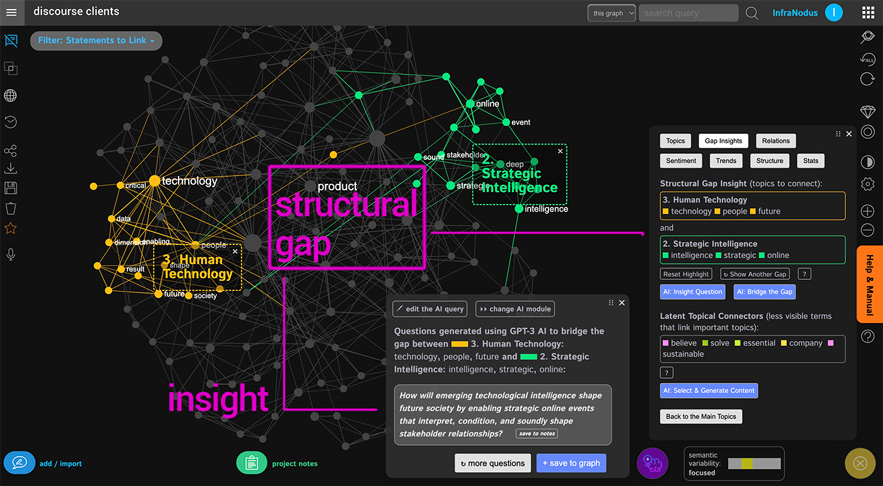InfraNodus: a Recommender System for Thinking
InfraNodus is a text analysis and visualization tool that I’ve been working on actively since 2018 (research started as far as 2011). It is available as a software app, an API, and a methodology that promotes ecological thinking and helps people reveal multiple perspectives in their own ideas and existing texts. It uses text network analysis and AI to represent any text as a network and to reveal the patterns and gaps within.
For this 3rd iteration of InfraNodus, I implemented some of my latest research ideas related to structural gaps in thinking. This approach is based on visualizing ideas as a network of interrelated concepts. The relations are based on the co-occurrence of ideas in a text, so they are specific for every discourse. Once a text is represented this way, we can build its network structure as a graph and align the clusters of concepts that tend to co-occur together more often than others. To provide an analogy with social networks: it’s like what ideas like to hang out and collaborate more often together on generating common discourses and narratives. Naturally, different groups of ideas belong to different clusters, so structural gaps are formed. If we look at these gaps, we can think of a possible connection that would link those ideas together. When the connection is made, it will usually be a small “eureka” moment, because it is surprising, but relevant (by the way, it’s one of the ways that people in China refer to the concept of serendipity).
Based on this approach, we can build a recommender system for thinking, where a user is recommended to think of an idea that bridges the structural gap in their thinking identified using the method above. As a result, the structure of thought becomes more coherent and connections are forged between ideas that belong to the same context leading to interesting thoughts and innovative ideas.
I implemented this approach into InfraNodus and made it available to the users along with the training materials. It had a very positive response and many researchers are now using it for research, strategy, consulting, and to enhance their personal thinking process.
Date
October 15, 2020
Category
Active, Digital, Featured, Framework, In Progress, Media, Medium, Methodology, Online, Publication, Tool, Type, Urgency, Visual

